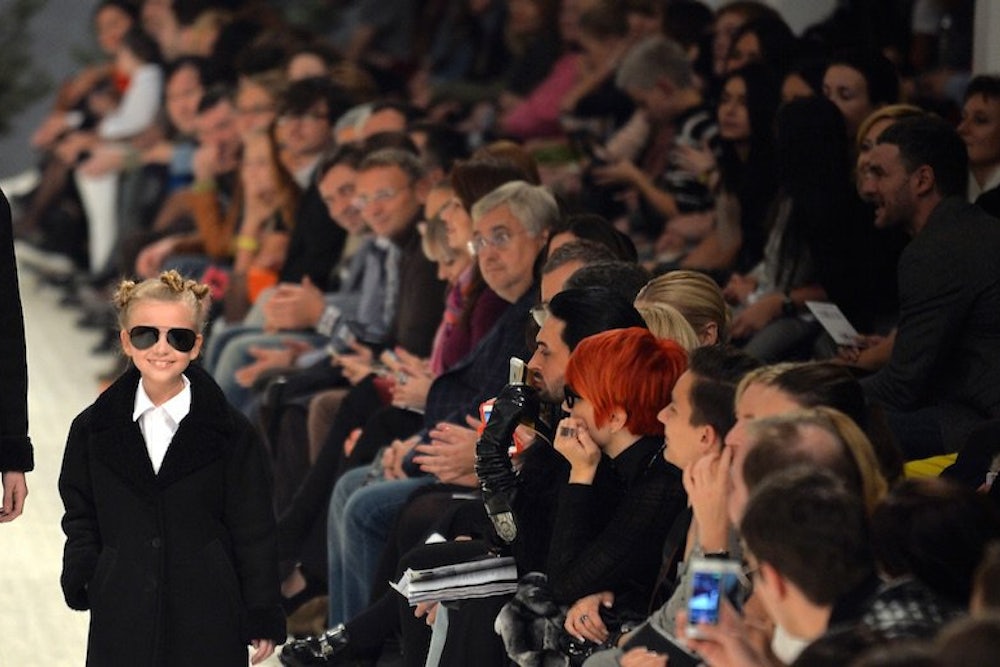When I was 16 years old, I was brought to Mexico, given drugs, and was coerced into being photographed topless. I had been hired to model for a successful tanning product company called California Tan. I was a teenager alone in a foreign country.
I arrived with the rest of the photoshoot team the day before, and we had a free afternoon to ourselves; the twenty-something cool-girl makeup artist who was staying in the room next to mine suggested we lay out at our private pool. She quickly removed her top and invited me to do the same, “to get a little extra tan with no tan lines.” Rationalizing that it was just us girls, that no one could see me in our walled-in private compound, no one would know, I did.
The next day, as I sat in the wide-open beach covered with sunbathing tourists, the thirty-something photographer bowed his head in a deferential manner before cooing how “it would be so pretty, so much better for the shot, if I had a long, tan back. No top." I understood what the make-up artist had done.
The photographer stood above me as he asked me to remove the small white bandeau top. My hands shook and the photographer began shooting, and the sounds of the camera's shutter clicking open and closed suddenly sounded like handcuffs being clamped repetitively on and off my little-girl wrists. Time seemed to stop as I sat in the shallows of the Gulf of Mexico, bathwater warm and clear, those 22 years ago. For the next seven days that I was employed by this large American corporation, I was photographed nude.
Today, I suffer from CPTSD due to my experiences as an underage worker in the fashion industry. It has few to no workplace protections, and no traditional union to create the necessary boundaries between workers and employers.
When we find ourselves debating the merits of artistic photography of children—Sally Mann’s portraits spring immediately to mind—we often overlook the backdrop of child exploitation that can occur in even a run-of-the-mill spray tan ad. Naked children have become chic throughout fashion and advertising, at the peril of the young.
According to the Justice Department: “A picture of a naked child may constitute illegal child pornography if it is sufficiently sexually suggestive. Additionally, the age of consent for sexual activity in a given state is irrelevant; any depiction of a minor under 18 years of age engaging in sexually explicit conduct is illegal.” It goes on to suggest, “that the legal definition of sexually explicit conduct does not require that an image depict a child engaging in sexual activity.” And that, “Images of child pornography are not protected under First Amendment rights, and are illegal contraband under federal law.”
Because of this law, teenagers around the country have been charged with possessing child pornography after receiving nude sexts sent from underage teens. Of course, the fashion and advertising industries have gotten off scot-free, proliferating child porn imagery in plain sight. It’s also illegal to entice or coerce minors to participate in nude photos. In my experience, these are often ignored distinctions in fashion and advertising.
Miley Cyrus was 15 when she was photographed nude by Annie Leibovitz for Vanity Fair. Afterward, Miley’s father, the musician Billy Ray Cyrus, said that he’d felt tricked by the famous photographer. “I wasn't there when that pictures was taken... I didn't know they was gonna strip her down."
Kate Moss, too, was only seventeen when she was infamously photographed nude for the 1992 Calvin Klein Obsession campaign. In a recent video interview with Nick Knight, Moss spoke about the abusive way her then-boyfriend Mario Sorrenti, a darling of the fashion world, forced her to strip and be photographed nude even after she had expressly said no.
Her naked, underage image was on billboards and buses, in magazines and television sets across the world, and no one blinked an eye. No arrests were made. No protests happened. In fact, the Calvin Klein Obsession perfume became a number one fragrance.
Young fashion models are particularly vulnerable to predatory behaviors and child abuse because the fashion industry falls under the umbrella of ‘art.’ While the work that designers do can be called artistic, the fashion workforce is primarily run on the backs of young women worldwide—from dangerous manufacturing conditions in sweatshops abroad, to thin 14-year-olds walking the stages of the Big Apple. Today, 54 percent of models begin working at or before the age of sixteen. Agencies start recruiting at thirteen.
Last year, Congresswoman Carolyn B. Maloney's (New York's 12th congressional district) office was looking into including fashion models in the current protection provided to other child entertainers.1 But things stalled, because it’s difficult to communicate that the images used to promote ready-wear styles are, more often than not, little girls dressed up to look like women. (Currently, New York is the only state in the U.S. that has included fashion models under child performers' protections.)
Over two decades ago, photographs of my 16-year-old semi-nude image appeared in stores across the country, hawking a ‘healthy glow’ to adults. I would like for us to reconsider those images of undressed minors, and finally create federal legislation offering children restitution and protection.
The Shirley Temple Act of 1938 exempted child entertainers—of which models are a part—from the Fair Standards Act that protects other child laborers, leaving each state to regulate children working in entertainment.
